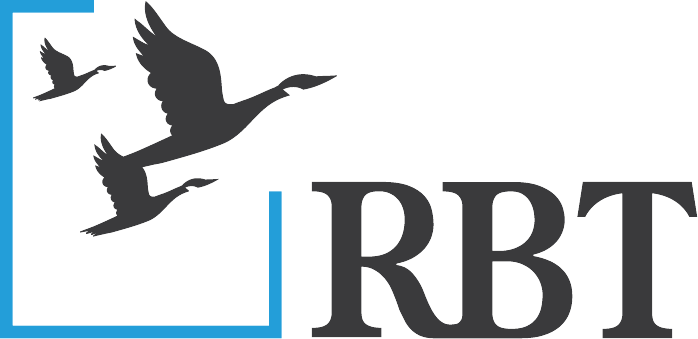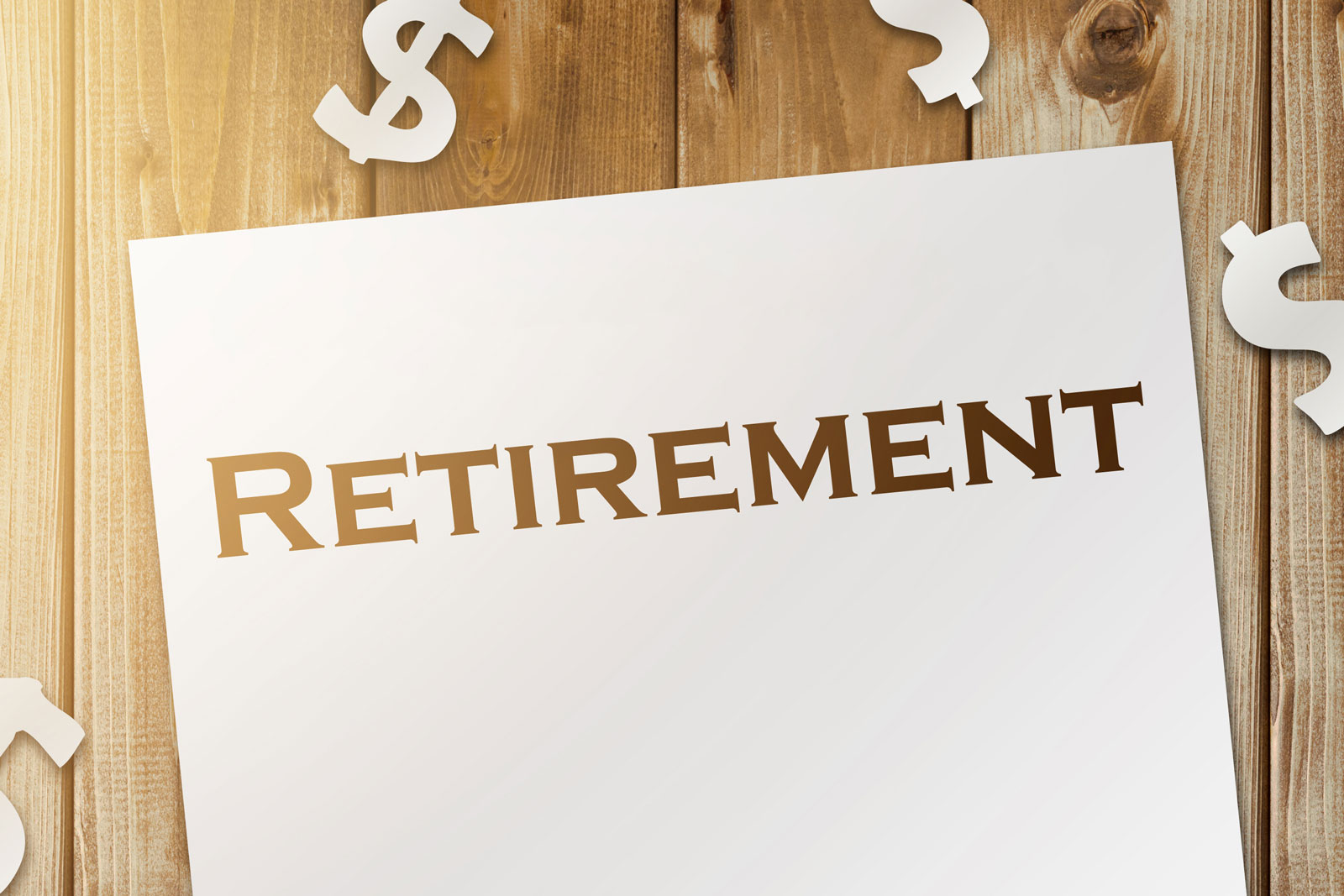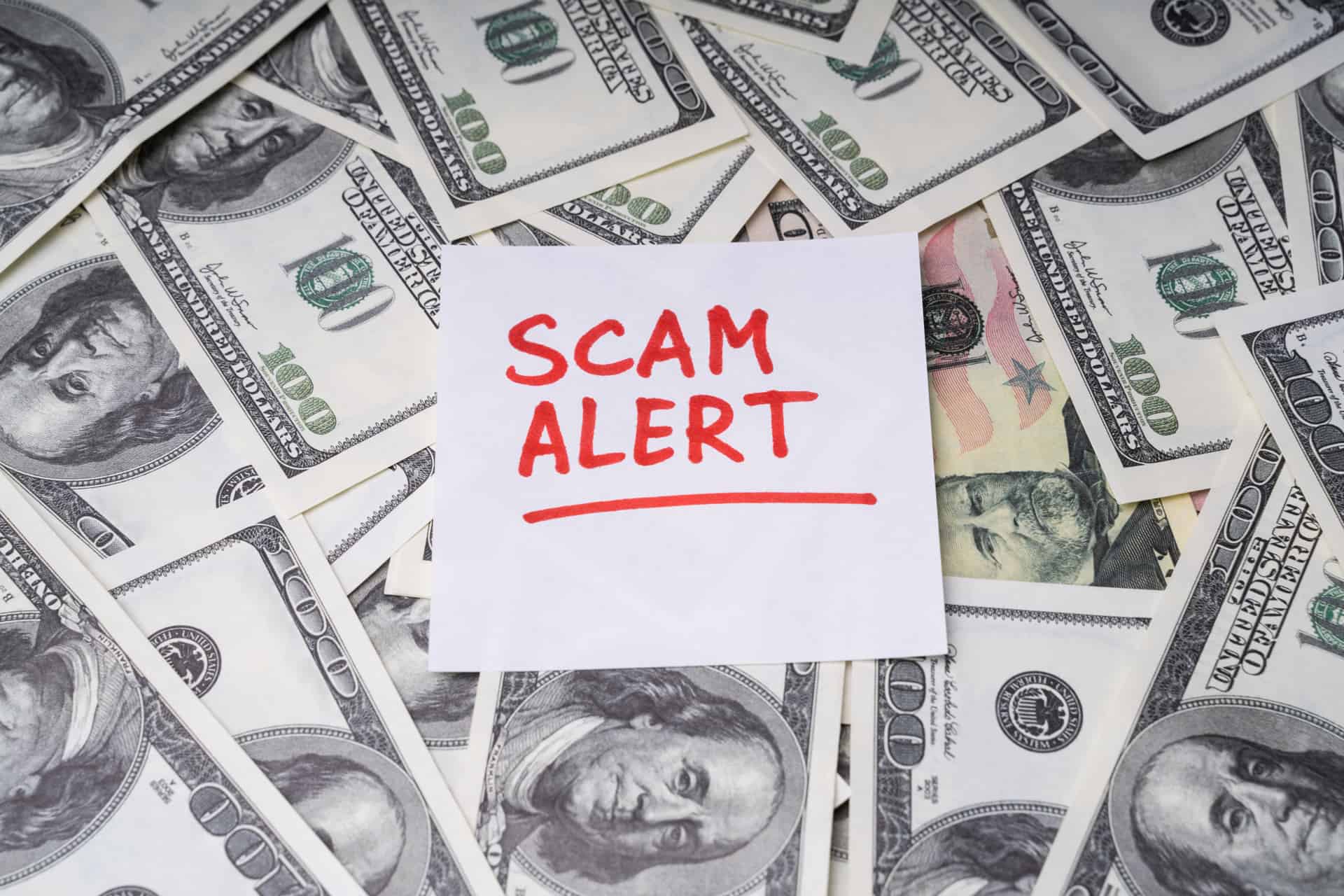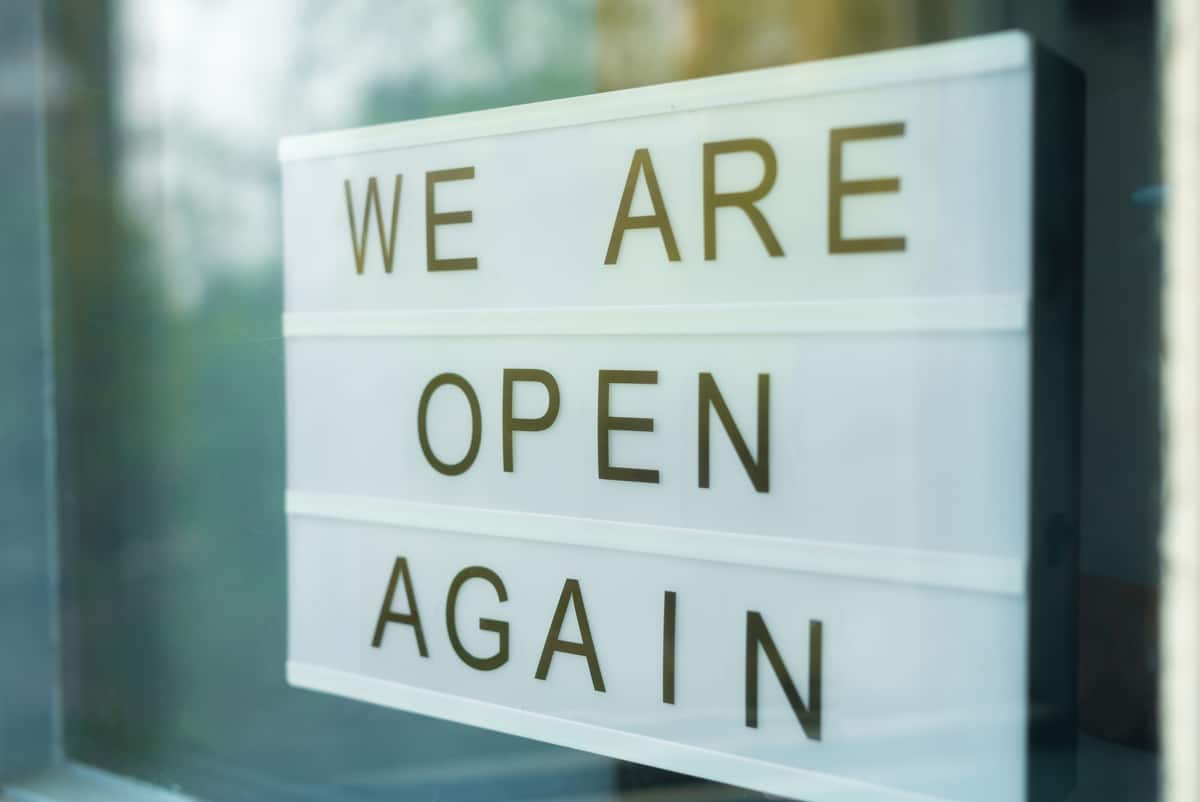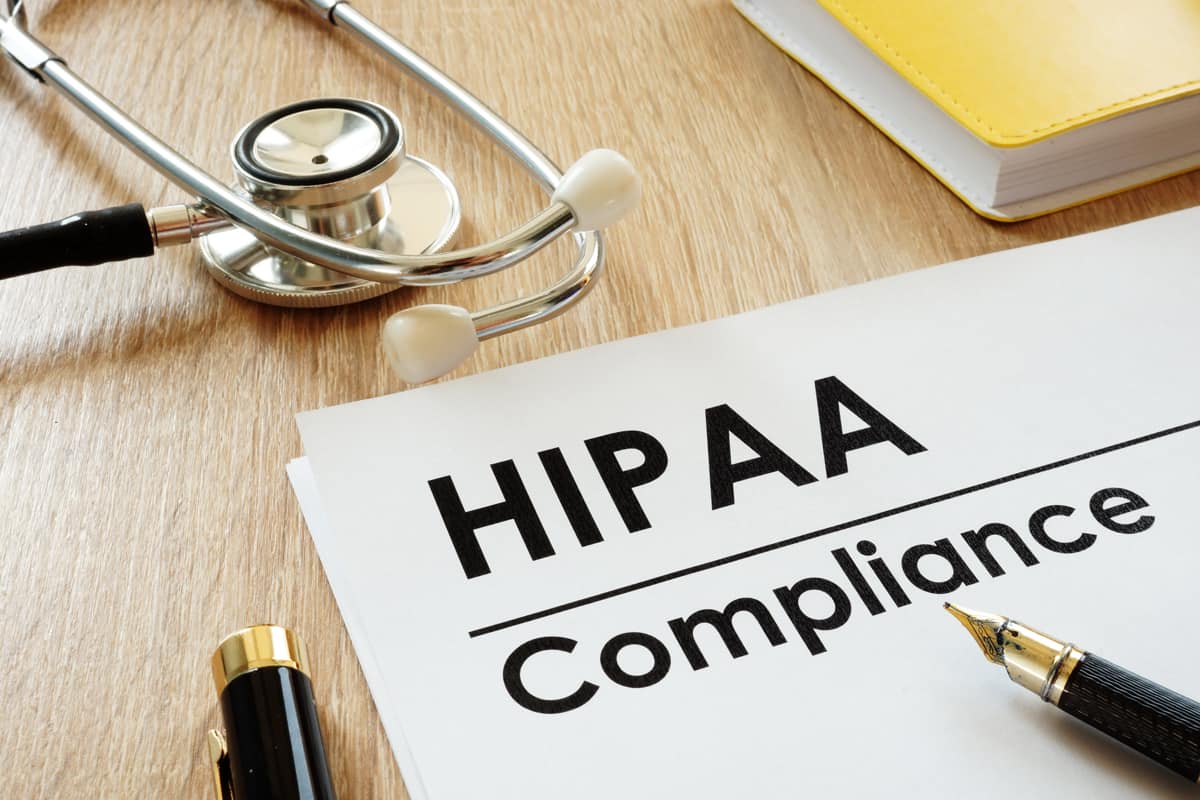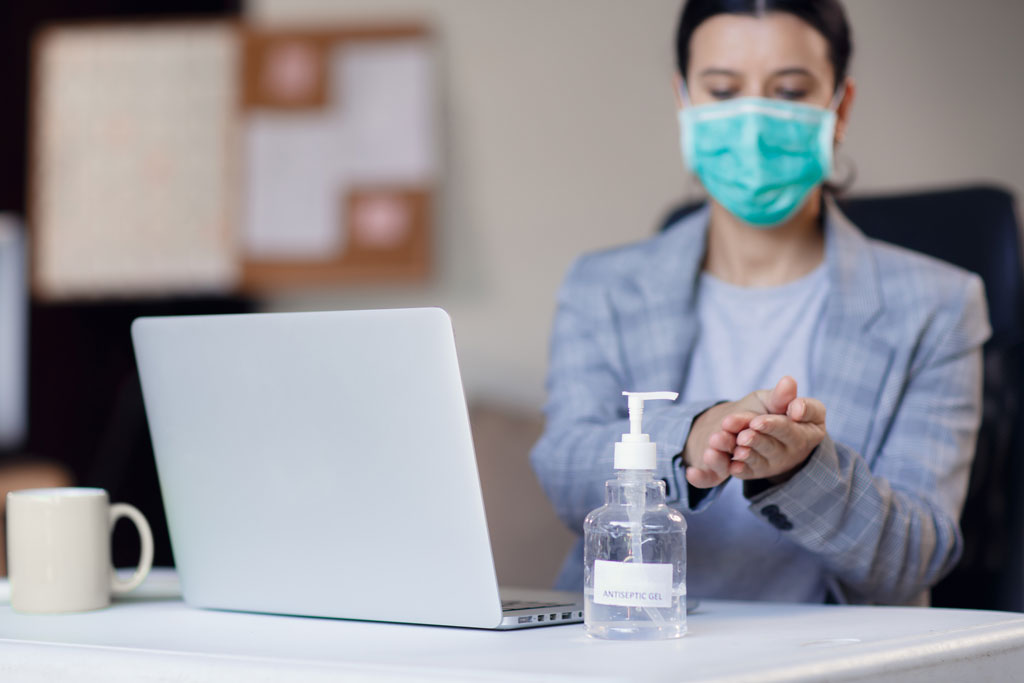Updated 4/23/20 – Effective April 23, 2020, Congress has approved an additional $310 billion in funding for the Paycheck Protection Program, $50 billion for the EIDL program and $10 billion for emergency EIDL grants.
This reserves certain amounts for the loans to be made as follows (which may make it easier for smaller businesses to access funding):
- $30 billion for loans made by Insured Depository Institutions and Credit Unions that have assets between $10 billion and $50 billion; and
- $30 billion for loans made by Community Financial Institutions, Small Insured Depository Institutions, and Credit Unions with assets less than $10 billion
SBA has also clarified eligibility for large companies with adequate sources of liquidity (see FAQ).
Three options for middle market businesses
- U.S. Small Business Administration (SBA) Economic Injury Disaster Loan Assistance (EIDL) – SBA program that existed before COVID-19 that offers up to $2 million in loans for eligible businesses.
- Paycheck Protection Program – Created through the Coronavirus, Aid, Relief, and Economic Security Act (CARES Act), the Paycheck Protection Program expands SBA support for businesses with loans of up to $10 million.
- Updated 4/9/20 Main Street Lending Program – The Main Street Lending Program is intended to facilitate lending to small and medium-sized businesses. It contains two facilities. The Main Street New Loan Facility (MSNLF) offers new loans from a minimum of $1 million up to a maximum of $25 million, and it is the program that we believe most clients will access. The Main Street Expanded Loan Facility allows banks to add to the size of an outstanding loan issued prior to April 8, 2020, to a business customer, rather than initiate a new loan.
EIDL Program
The Coronavirus Preparedness and Response Supplemental Appropriations Act enacted on March 6, 2020, expanded the EIDL Program to provide SBA loans to qualified small businesses. Qualifying businesses can receive up to $2 million in loans to be used for working capital and ordinary expenditures. The actual amount available to any business is tied to its economic injury from COVID-19. EIDLs are applied for directly with the SBA and funded by the SBA.
Paycheck Protection Program
Updated: 4/7/20 – 12:00 CT to reflect $100,000 applies to cash compensation. This program provides federally guaranteed loans to small businesses. The program is administered by the SBA through its 7(a) lending program under which the SBA guarantees loans made by banks to qualifying borrowers. Loans can be as large as 2.5 times a borrower’s monthly payroll costs for its U.S. employees (cash compensation of any employee above $100,000 must be subtracted) as measured over the prior twelve months, or $10 million, whichever is smaller.
Loans under the Paycheck Protection Program are third-party loans with SBA guarantees.
Updated 4/9/20 Main Street Lending Program
The Main Street Lending Program includes two loan facilities, and most clients will apply under the Main Street New Loan Facility.
- The Main Street New Loan Facility (MSNLF) is for new loans, and the maximum loan size is the lesser of $25 million or an amount that, when added to the borrower’s existing outstanding and committed but undrawn debt, does not exceed four times that borrower’s 2019 EBITDA. This is the facility the majority of our clients will access.
- The Main Street Expanded Loan Facility (MSELF) allows banks to add to the size of an outstanding loan issued prior to April 8, 2020, to a business customer, rather than initiate a new loan. The maximum loan size is the lesser of $150 million, 30% of the borrower’s existing outstanding and committed but undrawn bank debt, or an amount that, when added to the borrower’s existing outstanding and committed but undrawn debt, does not exceed six times that borrower’s 2019 EBITDA.
Rates and debt forgiveness
EIDL Program
Interest rates are 3.75% for small businesses and 2.75% for nonprofit organizations. EIDL loans are not forgivable.
Paycheck Protection Program
Loans shall bear interest at a rate of 1%. The maturity of the loans is 2 years. Payments of both principal and interest will be deferred for six months following the date of loan disbursement; however, interest will accrue during that period. Provided a company retains existing employees at or near current salary levels, the debt will be forgiven to the extent that 75% of proceeds are used in an eight-week period following loan origination for payroll costs, and the remaining 25% can be forgiven for mortgage interest, rent and utility payments during the same eight-week period. The amount forgiven will be reduced by a formula that takes into consideration any reduction of workforce. Any employee cuts or wage reductions will reduce forgiven amounts.
Updated 4/9/20 Main Street Lending Program
Loans shall bear interest at an adjustable rate of SOFR + 250-400 basis points. The term of the loan is four years. Amortization of principal and interest is deferred for one year. Prepayment is permitted without penalty. Loans are not forgivable.
Eligibility
EIDL Program
An eligible small business is determined by the number of employees and average annual sales with different standards per industry. Most manufacturing companies with 500 or fewer employees and most non-manufacturing businesses with average annual receipts under $7.5 million can qualify. There are exceptions by industry.
Loans under this program are only available to borrowers that can show they are unable to meet their existing financial obligations as a result of the COVID-19 crisis. Cannabis businesses, casinos and racetracks are among the businesses that are not eligible.
Paycheck Protection Program
Eligible recipients must have 500 or fewer employees whose principal place of residence is in the United States and have been in operation on February 15, 2020. The borrower must certify in good faith that current economic uncertainty makes this loan request necessary to support ongoing operations.
Businesses must meet one of the following requirements:
- 500 employees or fewer, or
- Meet applicable employee size standards for their North American Industry Classification System (NAICS), or
- 500 employees or fewer by location for those in the accommodation and food service industry as defined by their NAICS code, or for any business acting as a franchise that is assigned a franchise identifier code by the Small Business Administration, or
- Sole proprietors, independent contractors and other self-employed individuals, including gig economy workers, or
- Charitable tax-exempt organizations (including religious organizations), described in section 501(c)(3) of the Internal Revenue Code, and veterans organizations, described in section 501(c)(19), are eligible to participate in the program. However, other tax-exempt organizations (e.g., those described in sections 501(c)(4), (5), and (6)) are not eligible to participate.
Household employers or businesses engaged in any activity that is illegal under federal, state, or local law are not eligible.
The SBA website offers a size standards tool to assist in determining whether a business is classified as small.
Updated 4/4/20 – 09:30 CT: The SBA published affiliation rules applicable to the Paycheck Protection Program on April 3, 2020.
Updated 4/20/20 The SBA published additional guidance for individuals with self-employment income who file a Form 1040, Schedule C. If you are a partner in a partnership, you may not submit a separate Paycheck Protection Program loan application for yourself as a self-employed individual. Instead, the self-employed income of general active partners may be reported as payroll cost, up to $100,000 annualized, on a Paycheck Protection Program loan application filed by on or on behalf of the partnership.
This guidance also provides additional eligibility for officers and key employees of a PPP Lender that own less than a 30% equity interest in another otherwise eligible business and eligibility for certain businesses that receive revenue from legal gaming. The additional guidance should be reviewed very carefully as there are limitations for both of these eligibility
items.
Updated 4/23/20 The SBA published FAQ to address businesses owned by large companies with adequate sources of liquidity.
In addition to reviewing applicable affiliation rules to determine eligibility, all borrowers must assess their economic need for a Paycheck Protection Program loan under the standard established by the CARES Act and the Paycheck Protection Program regulations at the time of the loan application. Borrowers must certify in good faith that current economic uncertainty makes this loan necessary to support their ongoing operations, which includes taking into account their current business activity and their ability to access other sources of liquidity sufficient to support their operations in a manner that is not significantly detrimental to their business. Companies must be prepared to demonstrate to SBA, upon request, the basis for their certification. Any borrower that applied for a PPP loan prior to the issuance of guidance on April 23, 2020 and repays the loan in full by May 7, 2020 will be deemed by SBA to have made the required certification in good faith.
Updated 4/9/20 Main Street Lending Program
Businesses with up to 10,000 employees or up to $2.5 billion in 2019 annual revenues are eligible. The business must be created or organized in the United States with significant operations in and the majority of its employees in the United States. See FAQ for details on attestations and restrictions on compensation, stock repurchase and capital distribution.
How to apply
EIDL Program
The EIDL program is applied for directly with and administered by the SBA. An online application is available at https://www.sba.gov/disaster-assistance/coronavirus-covid-19.
Paycheck Protection Program
Applicants must submit SBA Form 2483 with payroll documentation to a participating lender. The Small Business Administration has a network of at least 1,800 approved lenders that process small business loans and intends to add more of them. If a client’s bank is not an SBA approved lender, they can contact the SBA to find one.
Updated 4/9/20 Main Street Lending Program
Applicants should connect directly with their lender.
Updated 4/23/20 – to reflect PPP update from SBA Q&A for EIDL, Paycheck Protection Program and Main Street Lending Program
Additional details on the loan programs are available in the subsequent Q&A.
What direct financial assistance programs for small and medium enterprises (SMEs) have become available as a result of the COVID-19 virus outbreak?
EIDL Program
The Coronavirus Preparedness and Response Supplemental Appropriations Act enacted on March 6, 2020, expanded the EIDL Program to provide SBA loans to qualified small businesses. Qualifying businesses can receive up to $2 million in loans to be used for working capital and ordinary expenditures. The actual amount available to any business is tied to its economic injury from COVID-19.
Paycheck Protection Program
Updated: 4/7/20 – 12:00 CT to reflect $100,000 applies to cash compensation. This program provides federally guaranteed loans to small businesses. This program is administered by the SBA through its 7(a) lending program under which the SBA guarantees loans made by banks to qualifying borrowers. Loans can be as large as 2.5 times a borrower’s monthly payroll costs for its U.S. employees (cash compensation of any employee above $100,000 must be subtracted) as measured over the prior twelve months, or $10 million, whichever is smaller.
Updated 4/9/20 Main Street Lending Program
The Main Street Lending Program includes two loan facilities.
- The Main Street New Loan Facility (MSNLF) is for new loans, and the maximum loan size is the lesser of $25 million or an amount that, when added to the borrower’s existing outstanding and committed but undrawn debt, does not exceed four times that borrower’s 2019 EBITDA. This is the facility that the majority of our clients will access.
- The Main Street Expanded Loan Facility (MSELF) allows banks to add to the size of an outstanding loan issued prior to April 8, 2020, to a business customer, rather than initiate a new loan. The maximum loan size is the lesser of $150 million, 30% of the borrower’s existing outstanding and committed but undrawn bank debt, or an amount that, when added to the borrower’s existing outstanding and committed but undrawn debt, does not exceed six times that borrower’s 2019 EBITDA.
How much is available to SMEs through each program?
EIDL Program
Qualifying business can receive up to $2 million in loans to be used for working capital and ordinary expenditures. The actual amount available to any business is tied to their economic injury from COVID-19.
Paycheck Protection Program
Updated: 4/7/20 – 12:00 CT to reflect $100,000 applies to cash compensation. Eligible recipients may be able to receive up to $10 million. Businesses that have been in existence for at least a year can obtain the lesser of 2.5 times their average monthly payroll for U.S. employees for the previous 12 months (cash compensation of any employee above $100,000 must be subtracted), less the outstanding amount of any EIDL taken between January 31, 2020 and April 3, 2020 (exclusive of any advance under an EIDL COVID-19 loan that does not have to be repaid) or $10 million, whichever is smaller. Entities not in existence for the previous 12 months can use their average monthly payroll for the period from January 1, 2020, through February 29, 2020.
Updated 4/9/20 Main Street Lending Program
Loans are a minimum of $1 million.
- The maximum loan size in the Main Street New Loan Facility (MSNLF) is the lesser of $25 million or an amount that, when added to the borrower’s existing outstanding and committed but undrawn debt, does not exceed four times that borrower’s 2019 EBITDA. This is the facility that the majority of our clients will access.
- The maximum loan size in the Main Street Expanded Loan Facility (MSELF) is the lesser of $150 million, 30% of the borrower’s existing outstanding and committed but undrawn bank debt, or an amount that, when added to the borrower’s existing outstanding and committed but undrawn debt, does not exceed six times that borrower’s 2019 EBITDA.
How do I calculate the maximum amount I can borrow?
Paycheck Protection Program
Updated: 4/7/20 – 12:00 CT to reflect $100,000 applies to cash compensation. The following methodology, which is one of the methodologies contained in the Act, will be most useful for many applicants.
- Step 1: Aggregate payroll costs (defined in detail below) from the last twelve months for employees whose principal place of residence is the United States.
- Step 2: Subtract any cash compensation paid to an employee in excess of an annual salary of $100,000 and/or any amounts paid to an independent contractor or sole proprietor in excess of $100,000 per year.
- Step 3: Calculate average monthly payroll costs (divide the amount from Step 2 by 12).
- Step 4: Multiply the average monthly payroll costs from Step 3 by 2.5.
- Step 5: Add the outstanding amount of an Economic Injury Disaster Loan (EIDL) made between January 31, 2020 and April 3, 2020, less the amount of any “advance” under an EIDL COVID-19 loan (because it does not have to be repaid).
Updated 4/20/20 If you are eligible as an individual with self-employment income and file a Form 1040, Schedule C, with no employees, 2019 Form 1040 Schedule C line 31 net profit amount should be used in the same methodology above in place of aggregate payroll costs. If the net profit amount is over $100,000, reduce it to $100,000. If this amount is zero or less, you are not eligible for a Paycheck Protection Program loan. Steps 3 – 5 would then be followed.
If you are eligible as an individual with self-employment income and file a Form 1040, Schedule C, with employees, 2019 Form 1040 Schedule C line 31 net profit amount should be used in the same methodology above in place of aggregate payroll costs. If the net profit amount is over $100,000, reduce it to $100,000. Also, include the 2019 eligible gross wages and tips paid to your employees plus any pre-tax employee contributions for health insurance or other fringe benefits excluded from Taxable Medicare wages and tips, subtracting any amounts paid to any individual employee in excess of $100,000 annualized. Finally, include the 2019 eligible employer health insurance contributions, retirement contributions, and state and local taxes assessed on employee compensation. Steps 3 – 5 would then be followed.
Updated 4/9/20 Main Street Lending Program
The maximum loan size in the Main Street New Loan Facility (MSNLF) is the lesser of $25 million or an amount that, when added to the borrower’s existing outstanding and committed but undrawn debt, does not exceed four times that borrower’s 2019 EBITDA. This is the facility that the majority of our clients will access.
The maximum loan size in the Main Street Expanded Loan Facility (MSELF) is the lesser of $150 million, 30% of the borrower’s existing outstanding and committed but undrawn bank debt, or an amount that, when added to the borrower’s existing outstanding and committed but undrawn debt, does not exceed six times that borrower’s 2019 EBITDA.
What qualifies as “payroll costs?”
Paycheck Protection Program
Payroll costs consist of compensation to employees (whose principal place of residence is the United States) in the form of:
- Salary, wages, commissions, or similar compensation;
- Cash tips or the equivalent (based on employer records of past tips or, in the absence of such records, a reasonable, good-faith employer estimate of such tips);
- Payment for vacation, parental, family, medical, or sick leave;
- Allowance for separation or dismissal;
- Payment for the provision of employee benefits consisting of group health care coverage, including insurance premiums, and retirement;
- Payment of state and local taxes assessed on compensation of employees; and
- For an independent contractor or sole proprietor, wage, commissions, income, or net earnings from self-employment or similar compensation.
Is there anything that is expressly excluded from the definition of payroll costs?
Paycheck Protection Program
Updated: 4/7/20 – 12:00 CT to reflect $100,000 applies to cash compensation. Yes. The Act expressly excludes the following:
- Any compensation of an employee whose principal place of residence is outside of the United States;
- The cash compensation of an individual employee in excess of an annual salary of $100,000, prorated as necessary;
- Federal employment taxes imposed or withheld between February 15, 2020 and June 30, 2020, including the employee’s and employer’s share of FICA (Federal Insurance Contributions Act) and Railroad Retirement Act taxes, and income taxes required to be withheld from employees; and
- Qualified sick and family leave wages for which a credit is allowed under sections 7001 and 7003 of the Families First Coronavirus Response Act (Public Law 116–127).
Do independent contractors count as employees for purposes of Paycheck Protection Program loan calculations?
No, independent contractors have the ability to apply for a Paycheck Protection Program loan on their own so they do not count for purposes of a borrower’s loan calculation.
What are the approved uses for the funds?
EIDL Program
Can be used for working capital and ordinary expenditures. Page 10 Last updated April 23, 2020
Paycheck Protection Program
Updated: 4/7/20 – 12:00 CT to reflect $100,000 applies to cash compensation. Funds can be used to cover payroll costs or employee benefits, certain operating costs described below and interest on debt obligations.
Allowable uses of the funds include:
- Payroll costs (cash compensation of any employee above $100,000 must be subtracted);
- Costs related to the continuation of group health care benefits during periods of paid sick, medical or family leave, and insurance premiums;
- Mortgage interest payments (but not mortgage prepayments or principal payments);
- Rent (including rent under a lease agreement);
- Utilities; and f. Interest on any other debt obligations that were before February 15, 2020;
- Refinancing an SBA EDIL loan made between January 31, 2020 and April 3, 2020 (see separate FAQ on refinancing an EIDL).
Additional information related to loan forgiveness is available below (See FAQ on loan forgiveness).
Updated 4/20/20 For individuals with income from self-employment who file a 2019 Form 1040, Schedule C, funds from a Paycheck Protection Program loan can be used for owner compensation replacement calculated based on 2019 net profit in place of payroll costs.
Updated 4/9/20 Main Street New Loan Program
Specific use of funds is not defined for loans through the Main Street Lending Program. Attestations and restrictions are listed in the eligibility FAQ.
Who is an Eligible Recipient?
EIDL Program
An eligible small business is determined by the number of employees and average annual sales with different standards per industry. Most manufacturing companies with 500 or fewer employees and most non-manufacturing businesses with average annual receipts under $7.5 million can qualify. There are exceptions by industry.
Loans under this program are only available to borrowers that can show that they are unable to meet their existing financial obligations as a result of the COVID-19 crisis. Cannabis businesses, casinos and racetracks are among the businesses that are not eligible.
Paycheck Protection Program
Eligible recipients must have 500 or fewer employees whose principal place of residence is in the United States and have been in operation on February 15, 2020. The borrower must certify in good faith that current economic uncertainty makes this loan request necessary to support ongoing operations.
Businesses must meet one of the following requirements:
- 500 employees or fewer, or
- Meet applicable employee size standards for their North American Industry Classification System (NAICS), or
- 500 employees or fewer by location for those in the accommodation and food service industry as defined by their NAICS code, or for any business acting as a franchise that is assigned a franchise identifier code by the Small Business Administration
- Sole proprietors, independent contractors and other self-employed individuals, including gig economy workers.
- Charitable tax-exempt organizations (including religious organizations), described in section 501(c)(3) of the Internal Revenue Code, and veterans organizations, described in section 501(c)(19), are eligible to participate in the program. However, other tax-exempt organizations (e.g., those described in sections 501(c)(4), (5), and (6)) are not eligible to participate.
Household employers or businesses engaged in any activity that is illegal under federal, state, or local law are not eligible.
The SBA website offers a size standards tool to assist in determining whether a business is classified as small.
Updated 4/4/20 – 09:30 CT: The SBA published affiliation rules applicable to the Paycheck Protection Program on April 3, 2020.
Updated 4/9/20 Main Street Lending Program
Businesses with up to 10,000 employees or up to $2.5 billion in 2019 annual revenues are eligible. The business must be created or organized in the United States with significant operations in and the majority of its employees in the United States.
In addition to certifications required by applicable statutes and regulations, the following attestations will be required with respect to each eligible loan:
- The lender must attest that the proceeds of the loan (or the upsized tranche of the loan under MSELF) will not be used to repay or refinance pre-existing loans or lines of credit made by the lender to the borrower.
- The borrower must commit to refrain from using the proceeds of the Main Street Lending Program loan (or the upsized tranche of the loan under MSELF) to repay other loan Page 12 Last updated April 23, 2020 balances. The borrower must commit to refrain from repaying other debt of equal or lower priority, with the exception of mandatory principal payments, unless the borrower has first repaid the Main Street Lending Program loan in full.
- The lender must attest that it will not cancel or reduce any existing lines of credit outstanding to the borrower. The borrower must attest that it will not seek to cancel or reduce any of its outstanding lines of credit with the Main Street lender or any other lender.
- The borrower must attest that it requires financing due to the exigent circumstances presented by the coronavirus disease 2019 (“COVID-19”) pandemic, and that, using the proceeds of the loan (or the upsized tranche of the loan under MSELF), it will make reasonable efforts to maintain its payroll and retain its employees during the term of the loan.
- The borrower must attest that it meets the EBITDA leverage condition (existing outstanding and committed but undrawn debt, does not exceed four times the borrower’s 2019 EBITDA for MSNLR and six times the borrower’s 2019 EBITDA).
- The borrower must attest that it will follow compensation, stock repurchase, and capital distribution restrictions that apply to direct loan programs under section 4003(c)(3)(A)(ii) of the CARES Act. These conditions, which are summarized below, apply through the duration of the loan and for 12 months after the date on which the loan is no longer outstanding.
- May not repurchase an equity security that is listed on a national securities exchange of the business of any parent company of the business, except to the extent required under a contractual obligation that was in effect on the date of enactment of the CARES Act (March 27, 2020).
- May not pay dividends or make other capital distributions with respect to the common stock of the business.
- Comply with limitations on compensation under section 4004 of the CARES Act, which are summarized below:
- Officers or employees with total compensation over $425,000 in calendar year 2019 shall not receive total compensation in excess of what was received by the officer or employee in calendar year 2019. Severance pay or other benefits received upon termination shall not exceed twice the total compensation received by the officer or employee in calendar year 2019.
- Officers or employees with total compensation over $3 million in calendar year 2019 shall not receive total compensation over $3 million and 50% of the excess over $3 million of what was received in calendar year 2019. Page 13 Last updated April 23, 2020
- Lenders and borrowers will each be required to certify that the entity is eligible to participate in the program, including in light of the conflicts of interest prohibition in section 4019(b) of the CARES Act.
What do I need to provide to obtain funds?
Paycheck Protection Program
Applicants must submit SBA Form 2483 with payroll documentation to a participating lender. The Small Business Administration has a network of at least 1,800 approved lenders that process small business loans and intends to add more of them. If a client’s bank is not an SBA approved lender, they can contact the SBA to find one.
Updated 4/12/20 The statute of the CARES Act will require payroll tax forms, withholdings, paystubs, etc. to substantiate the payroll amounts.
How long does it take to obtain funds?
EIDL Program
The typical time frame for approval is two to three weeks with funds disbursed within five to seven days thereafter. Timelines may be extended given the increased applications.
Paycheck Protection Program
It is worth noting that loans under the Paycheck Protection Program are third-party loans with SBA guarantees, which may contribute to the speed at which funds will be accessible.
Applicants must submit SBA Form 2483 with payroll documentation to a participating lender.
Updated 4/9/20 Main Street Lending Program
Applicants should connect directly with their lender.
What are interest rates and payment terms?
EIDL Program
Interest rates are 3.75% for small businesses and 2.75% for nonprofit organizations. Payment terms are determined by whether there is partial or full refinancing of an existing loan.
Paycheck Protection Program
Loans shall bear interest at a rate of 1%. The maturity of the loans is two years. Payments of both principal and interest will be deferred for six months following the date of loan disbursement; however, interest will accrue during that period.
Updated 4/9/20 Main Street Lending Program
Loans shall bear interest at an adjustable rate of SOFR + 250-400 basis points. The maturity of the loan is four years. Amortization of principal and interest is deferred for one year. Prepayment is permitted without penalty. Loans are not forgivable.
Is the loan forgivable?
EIDL Program
Loans under the EIDL program are not forgivable.
Paycheck Protection Program
Yes. Provided a company retains existing employees at or near current salary levels, the debt will be forgiven to the extent that proceeds are used in an eight-week period following loan origination for the following:
- Payroll costs;
- Interest payments made on any mortgage incurred prior to February 15, 2020;
- Payment of any lease in force prior to February 15, 2020; and
- Payment on any utility for which service before February 15, 2020.
With respect to the items above, not more than 25% of the loan forgiveness may be attributable to non-payroll costs.
The amount forgiven will be reduced by a formula that takes into consideration any reduction of workforce. Any employee cuts or wage reductions will reduce forgiven amounts. Employers are allowed to rehire any employees previously let go before the application without penalty. The loan program is designed to encourage companies to retain as many employees as possible. If companies reduce headcount or payroll below certain thresholds, they may be ineligible for the full forgiveness.
Certain documentation is required to be retained, provided as proof and certified to include with an application for loan forgiveness as detailed in Section 1106(e).
Proceeds from any advance up to $10,000 on an EIDL loan will be deducted from the loan forgiveness amount.
Any amount of the loan that is forgiven is not includible as taxable income.
Updated 4/20/20 For individuals with income from self-employment who file a 2019 Form 1040, Schedule C, owner compensation replacement calculated based on 2019 net profit limited to eight weeks’ worth is also eligible for inclusion in proceeds used above.
Updated 4/9/20 Main Street Lending Program
Loans under the Main Street Lending Program are not forgivable.
Updated 4/9/20
Does applying for other programs or having existing funding under other programs preclude an organization from applying for funding under the Paycheck Protection Program? Can an EIDL be rolled over? Can a company take a Paycheck Protection Program loan and a Main Street Lending Program Loan?
Borrowers are precluded from receiving SBA funding under the Paycheck Protection Program and an Economic Injury Disaster Loan (EIDL) for the same purpose (i.e., double dipping). Updated 4/9/20 – Borrowers who have taken a Paycheck Protection Program loan may also take out a loan under the Main Street Lending Program. A company cannot participate in both Main Street New Loan Facility and the Main Street Expanded Loan Facility.
Borrowers who received an SBA EIDL loan from January 31, 2020 through April 3, 2020 may apply for a Paycheck Protection Program loan. If an EIDL loan was not used for payroll costs, it does not affect eligibility for a Paycheck Protection Program loan. If an EIDL loan was used for payroll costs, the Paycheck Protection Program loan must be used to refinance the EIDL loan.
Proceeds from any advance up to $10,000 on an EIDL loan will be deducted from the loan forgiveness amount for the Paycheck Protection Program loan.
A Paycheck Protection Program loan may affect a company’s ability to qualify for other tax credits and incentives outlined in the CARES Act.
How are private equity-backed companies and sponsors impacted by the CARES Act? What about venture capital backed companies?
Updated 4/4/20 – 09:30 CT: The SBA published affiliation rules applicable to the Paycheck Protection Program on April 3, 2020. Summary details are below, but the full rules linked in Page 16 Last updated April 23, 2020 the prior sentence should be reviewed and companies should consult with their attorney and lender on ultimate eligibility.
The SBA requires applicants to aggregate their operations with those of any affiliates as defined by the SBA. The aggregated company for purposes of the SBA must not exceed the small business standards. An affiliate exists when one business controls or has the power to control another, or when a third party controls or has the power to control both businesses.
Private equity-owned companies may be considered affiliated when all of the other portfolio companies and employee numbers are combined. This is a very specific analysis that must be done on a case by case basis. If the total employee threshold is exceeded, a company does not qualify. See above (FAQ on eligibility) for more information.
This also applies for venture capital firms that control more than 50% of voting stock or when two or more venture capital firms hold the largest stake, compared to that of other investors.
Rules are also in place for affiliations arising under stock options, convertible securities and agreements to merge.
Affiliation may also arise when there is an identity of interest between close relatives with identical or substantially identical business or economic interests.
The affiliation rules are waived for:
- Any business with less than 500 employees that is assigned a NAICS 72 code
- Any business that operates as a franchise and is assigned an SBA franchise identifier code
- Businesses that receive financial assistance from a company licensed under section 301 of the Small Business Investment Act of 1958 (note that further clarification is needed to determine if SBIC small businesses that also have investment from conventional private equity still qualify for the waiver)
The affiliation of a faith-based organization to another organization is not considered an affiliation if the relationship is based on a religious teaching or belief or otherwise constitutes a part of the exercise of religion.
What are the tax changes in the bill?
See tax alert issued on March 26, 2019 for details on tax changes resulting from the CARES Act.
How do I apply?
EIDL Program
The EIDL program is applied for directly with and administered by the SBA. An online application is available at https://www.sba.gov/disaster-assistance/coronavirus-covid-19.
Paycheck Protection Program
Applicants must submit SBA Form 2483 with payroll documentation to a participating lender. The Small Business Administration has a network of at least 1,800 approved lenders that process small business loans and intends to add more of them. If a client’s bank is not an SBA approved lender, they can contact the SBA to find one.
Updated 4/9/20 Main Street Lending Program
Applicants should connect directly with their lender.
Added 4/4/20 – 17:00 CT:
Is there guidance available on services we can provide to clients around the CARES Act?
Yes. Our NORM group has published CARES Act Services Guidance, and it is available on our Client Response Center.
Added 4/23/20 – 18:30 CT:
Do businesses owned by large companies with adequate sources of liquidity to support the business’s ongoing operations qualify for a Paycheck Protection Program loan?
In addition to reviewing applicable affiliation rules to determine eligibility, all borrowers must assess their economic need for a Paycheck Protection Program loan under the standard established by the CARES Act and the Paycheck Protection Program regulations at the time of the loan application. Borrowers must certify in good faith that current economic uncertainty makes this loan necessary to support their ongoing operations, which includes taking into account their current business activity and their ability to access other sources of liquidity sufficient to support their operations in a manner that is not significantly detrimental to their business. Companies must be prepared to demonstrate to SBA, upon request, the basis for their certification. Any borrower that applied for a Paycheck Protection Program loan prior to the issuance of guidance on April 23, 2020 and repays the loan in full by May 7, 2020 will be deemed by SBA to have made the required certification in good faith.
Download this information with the link below.
https://www.rbtcpas.com/wp-content/uploads/2020/04/Stimulus-Details-and-FAQ.pdf
